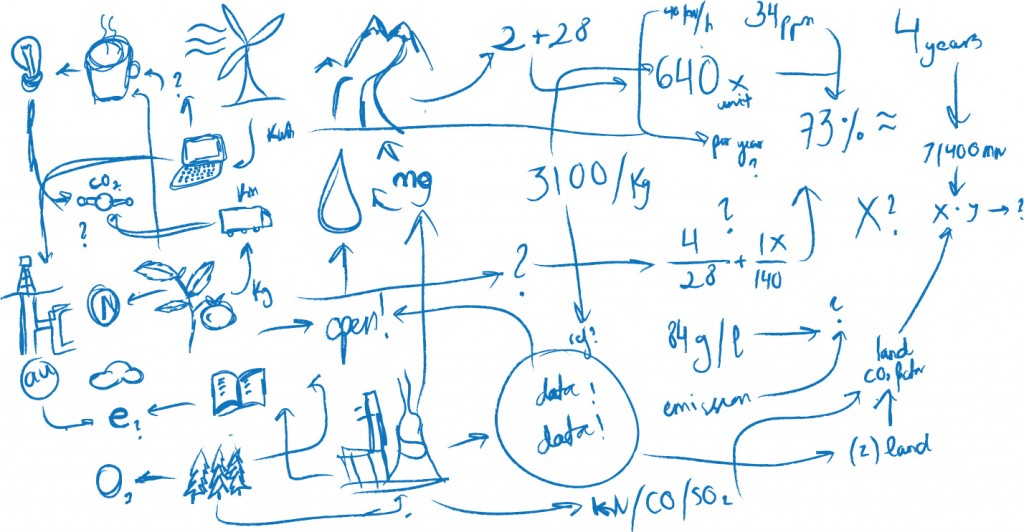Data driven sustainability
Sustainability decisions, both in organizations and for individuals are many times not based on solid facts and numbers. Even when quantitative goals are set, real-time feedback mechanisms do not exist for guiding and evaluating the results. Our hypothesis is that ICT can allow making visible the environmental variables and that this information can help to move towards sustainability from a quantitative perspective, helping to design better systems, evaluate the measures and communicate the results.

Several technological trends are converging that can allow this:
- Pervasive computing and the increase in availability of real time data for both physical and behavioral variables in a bottom-up paradigm. Real-time data refers to the access to data at the moment of creation. For instance knowing how many minutes it takes until the next bus arrives at your station or how much electricity your fridge is consuming right now.
- A movement towards extreme transparency and open data, both demanded by the users and starting to be embraced by businesses.
- The growth of linked data: a method of exposing, sharing, and connecting data using unique URIs on the web.
- The consolidation of the web 2.0 paradigm based on APIs and mashups. API refers to application programming interface and it can be seen as the public face of an application (as a web service) that other software can access and interact with. This makes the content created in a service usable in other services in a flexible way and has generated the rise of mashups (applications created by the remix of existing data by combining APIs).
This project aims to explore, experiment and develop tools around the possibility of using the previously mentioned ICT techniques for sustainability: collecting, accounting and analyzing environmental information as a driver for decisions. We call this approach data driven sustainability.
This project wants to:
- Explore the possibilities of data driven sustainability and create the needed theory and tools.
- Test the concept in practice, creating interventions to be released to the public.
- Create use-cases with the partners putting the concepts into real-world practice.
